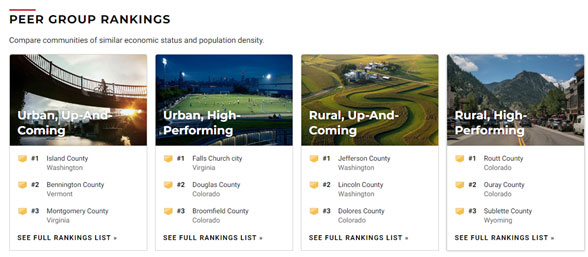General
Healthiest Communities: a new tool for improving public health
 What does it mean to be a healthy community? That important question sparked a new project from the Aetna Foundation and U.S. News & World Report, Healthiest Communities. Released just this morning, this new free and open-access public health data analysis tool tackles some of the toughest questions in public health. How does our location impact our health, and what can we do about it?
What does it mean to be a healthy community? That important question sparked a new project from the Aetna Foundation and U.S. News & World Report, Healthiest Communities. Released just this morning, this new free and open-access public health data analysis tool tackles some of the toughest questions in public health. How does our location impact our health, and what can we do about it?
These rankings are an important tool for public health professionals as they try to answer that question. By focusing on success stories, the rankings shine a spotlight on the top 500 healthiest communities in the country. The methodology underneath these rankings rests on 10 categories: community vitality, equity, economy, education, environment, food and nutrition, health, housing, infrastructure and public safety.
Healthiest Communities scores are based not just on measures like how much a community exercises or how often they are hospitalized, but on all the other factors that make that community a healthy place to live, work and play. The rankings factor in the social determinants of health to show what makes a community truly healthy.
Falls Church, Virginia received the top spot in the rankings, followed by Douglas County and Broomfield County, Colorado, respectively. In fact, the rankings show that Virginia and Colorado communities dominate the top 10 overall scores.
More importantly, public health professionals can view the specific data points used to develop that score. Each community gets separate scores for population health, equity, education, economy, housing and more. Those scores are broken down even further in Healthiest Communities by the individual measures used to calculate them. The ranking’s peer grouping tool allows community leaders to assess how their needs as a rural community might differ from an urban one, and what challenges communities like theirs face as a whole across the country, opening the door for new conversations and collaboration.

King County in Washington state, for example, ranks 319th nationally. The rankings tell us that this is a higher than average score for the county’s peer group of urban, high-performing communities. While King County has high scores in economy, population health and infrastructure, it clearly faces challenges in equity and environment.
The rankings show that King County’s high population health score is due to its high number of people with health insurance, lower-than-average smoking rates and higher-than-average life expectancy. But its low equity score reveals its higher-than-average premature death disparity score and higher racial disparity in educational attainment.
Healthiest Communities helps us explore our own community’s answers to questions like, how can expanding health insurance improve our population health? If our school system successfully graduates more high school seniors, would we be healthier? Should we prioritize affordable housing over other projects?
The detailed breakdown of data and community scores highlight where a community needs the most improvement, and where it is already strong. This tool is not just an assessment of where a community is now, but can inform strategic planning, prioritization and budgeting projects.
“To improve the health of our communities, we need to understand the unique challenges they face,” said APHA Executive Director Georges Benjamin. “The Healthiest Communities rankings will provide the type of insight that communities need to create informed, data-driven solutions.”
Healthiest Communities helps public health professionals understand, and change, the full picture of a community’s health.


